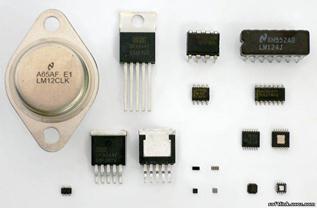Inferred return type
The inferred return type of an anonymous function F is used during type inference and overload resolution. The inferred return type can only be determined for an anonymous function where all parameter types are known, either because they are explicitly given, provided through an anonymous function conversion or inferred during type inference on an enclosing generic method invocation. The inferred result type is determined as follows: · If the body of F is an expression that has a type, then the inferred result type of F is the type of that expression. · If the body of F is a block and the set of expressions in the block’s return statements has a best common type T (§7.5.2.14), then the inferred result type of F is T. · Otherwise, a result type cannot be inferred for F. The inferred return type is determined as follows: · If F is async and the body of F is either an expression classified as nothing (§7.1), or a statement block where no return statements have expressions, the inferred return type is System.Threading.Tasks.Task · If F is async and has an inferred result type T, the inferred return type is System.Threading.Tasks.Task<T>. · If F is non-async and has an inferred result type T, the inferred return type is T. · Otherwise a return type cannot be inferred for F. As an example of type inference involving anonymous functions, consider the Select extension method declared in the System.Linq.Enumerable class: namespace System.Linq Assuming the System.Linq namespace was imported with a using clause, and given a class Customer with a Name property of type string, the Select method can be used to select the names of a list of customers: List<Customer> customers = GetCustomerList(); The extension method invocation (§7.6.5.2) of Select is processed by rewriting the invocation to a static method invocation: IEnumerable<string> names = Enumerable.Select(customers, c => c.Name); Since type arguments were not explicitly specified, type inference is used to infer the type arguments. First, the customers argument is related to the source parameter, inferring T to be Customer. Then, using the anonymous function type inference process described above, c is given type Customer, and the expression c.Name is related to the return type of the selector parameter, inferring S to be string. Thus, the invocation is equivalent to Sequence.Select<Customer,string>(customers, (Customer c) => c.Name) and the result is of type IEnumerable<string>. The following example demonstrates how anonymous function type inference allows type information to “flow” between arguments in a generic method invocation. Given the method: static Z F<X,Y,Z>(X value, Func<X,Y> f1, Func<Y,Z> f2) { Type inference for the invocation: double seconds = F("1:15:30", s => TimeSpan.Parse(s), t => t.TotalSeconds); proceeds as follows: First, the argument "1:15:30" is related to the value parameter, inferring X to be string. Then, the parameter of the first anonymous function, s, is given the inferred type string, and the expression TimeSpan.Parse(s) is related to the return type of f1, inferring Y to be System.TimeSpan. Finally, the parameter of the second anonymous function, t, is given the inferred type System.TimeSpan, and the expression t.TotalSeconds is related to the return type of f2, inferring Z to be double. Thus, the result of the invocation is of type double.
|




